Green Racquet-tailed Parrot
Also known as:
Green Racquet-tail, Green-headed Racquet-tail
Also known as:
Green Racquet-tail, Green-headed Racquet-tail
DID YOU KNOW?
The racquet-tailed parrots are the only parrots with tail feathers ending in spatules, or “racquets.”

Prioniturus

luconensis
Size:
29 cm (11.3 in)
Weight:
Not recorded.
Subspecies including nominate:
one
Colour Adult:
Both adults in general yellow/green, females being slightly darker; centre tail feathers green, the racquets black/blue, side feathers dark blue tipped with black. Beak pale blue/grey. Eye dark brown.
Colour Juvenile:
As in female but with shorter bare tail shafts.
Call:
Variety of screeches, gurgling and chiming sounds; also harsh notes, whinnying and ringing tones.
Green Racquet-tailed Parrot – AVoCet Cornell Lab Macaulay Library
More Information:
Content Sources:
CITES
BirdLife International
Cornell Lab of Ornithology/Birds of the World
A Guide to Parrots of the World, Juniper and Parr, 1998
Vanished and Vanishing Parrots, Forshaw, 2017.
Parrots: Status Survey and Conservation Plan 2000-2004, Snyder, McGowan, Gilardi and Grajal, 2000.
Parrots of the World, Forshaw, 2006. 2010 edition
Lexicon of Parrots, Thomas Arndt.
Captive Status:
Virtually unknown in captivity.
Longevity:
—
Housing:
12′ x 6′ x 6′ (3.6 x 1.8 x 1.8 m) spacious enclosure.
Diet:
Fruit such as banana, apple, cactus fruits; commercial or homemade lory food (made fresh daily); elder or mountain ash berries; seed mix such as: safflower, hemp, wheat, paddy rice, different millets, sunflower; rose hips; cooked rice; half-riped maize; egg food and hard-boiled egg twice weekly.
Enrichment:
—
Nest Box Size:
10″ x 10″ x 22″ (25.4 cm x 25.4 cm x 55.9 cm) box.
Clutch Size:
Not recorded.
Fledging Age:
—
Hatch Weight:
—
Peak Weight:
—
Weaning Weight:
—
World Population:
300-800 mature individuals. Rapidly decreasing.
IUCN Red List Status:
Endangered
CITES Listing:
Appendix II
Threat Summary:
A BirdLife “restricted-range” species. Has disappeared from a number of locations; now appears to be restricted to Luzon. Has seriously declined because of trapping and forest loss.
Range:
Confined to Luzon; likely extinct on Marinduque.
Habitat:
Previously from lowland primary forest and nearby maize fields, mostly below 700 m (2296 ft).
Wild Diet:
Includes fruit especially bananas, corn, rice, seeds and flowers.
Ecology and Behaviour:
Recently recorded flying over degraded and selectively logged areas. Little else known.
Clutch and Egg Size:
Not recorded.
Breeding Season:
Young birds seen in May in Luzon. Nest is presumably in tree hollow.
Related Links:
—
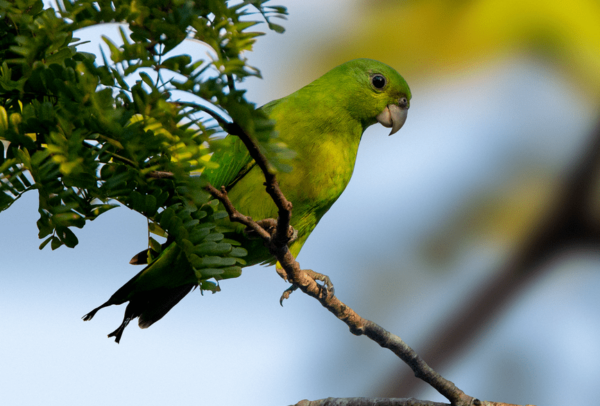
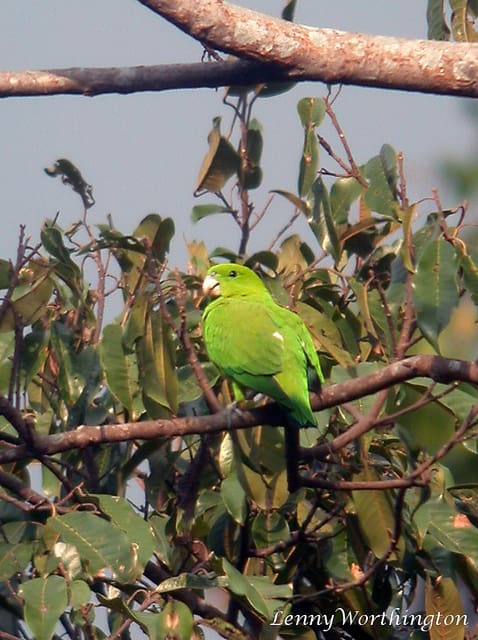
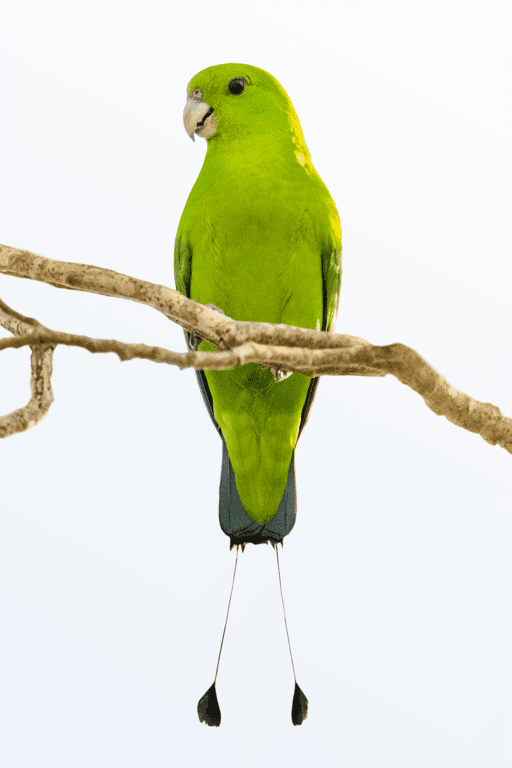
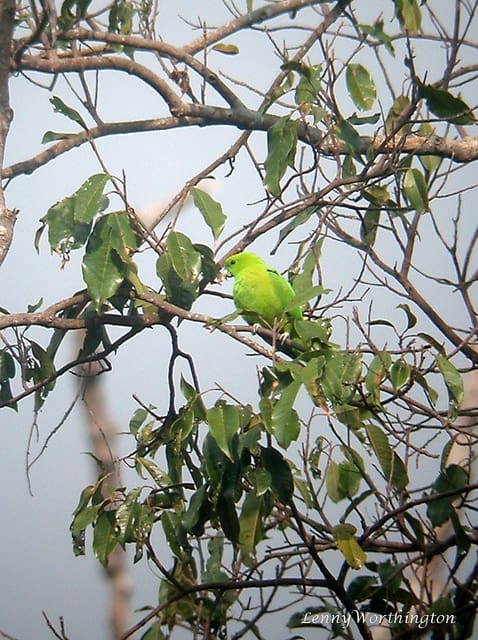
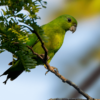
![© Len Worthington [CC BY-NC 2.0] via Flickr A wild Green Racquet-tailed Parrot perches on a branch](https://parrots.org/wp-content/uploads/2023/01/wpt_Green-Racquet-tailed-Parrot_1149-100x100.jpg)
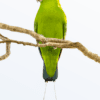
![© Len Worthington [CC BY-NC 2.0] via Flickr A wild Green Racquet-tailed Parrot perches on a branch](https://parrots.org/wp-content/uploads/2023/01/wpt_Green-Racquet-tailed-Parrot_1149-1-100x100.jpg)